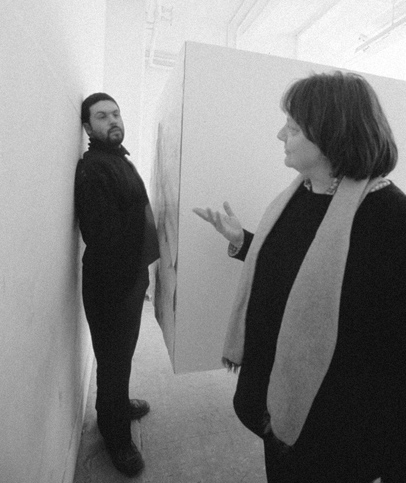Phyllida Barlow reflects on the master piece with art student Jonathan Thrupp, Slade School of Art London, 2001.
Measurements of the painting: 600x120x120cm – leaving only a 40cm gap to the opposite wall for viewing the painting.
This work was developed from a reflection on how the audience generally behave when viewing a painting in a gallery. You view the painting from a distance when you enter the space, then move closer to inspect details up closely and then move back again away from the painting to take it in from at least a few meters away. Furthermore, this work changed the way you can view the painting by literally occupying the space directly in front of it with a grotesquely thick frame mounted on the wall and sticking out 6 meters into the gallery space, leaving only a tight gap for the viewer to squeeze past the painting along the opposing wall. You can therefore only view the painting so close your nose is almost touching the canvas. The instalment of the painting is obviously more important than the painting itself.
The static nature of Obstruction painting seemed problematic (too boring) in the eyes of the artist. After a challenging construction of the 6-meter frame or plinth rather on the wall, it had to come down and the de-instalment process then became the narrative of the video work Destruction of Obstruction painting. In retrospect, this work seems more intriguing in that the artist’s studio process of dealing with painting and questions of how a painting is displayed and installed is challenged and critiqued further in this action.
Bruce Nauman’s early studio performance works where he moves around in the studio space comes to mind as an art historic reference.




